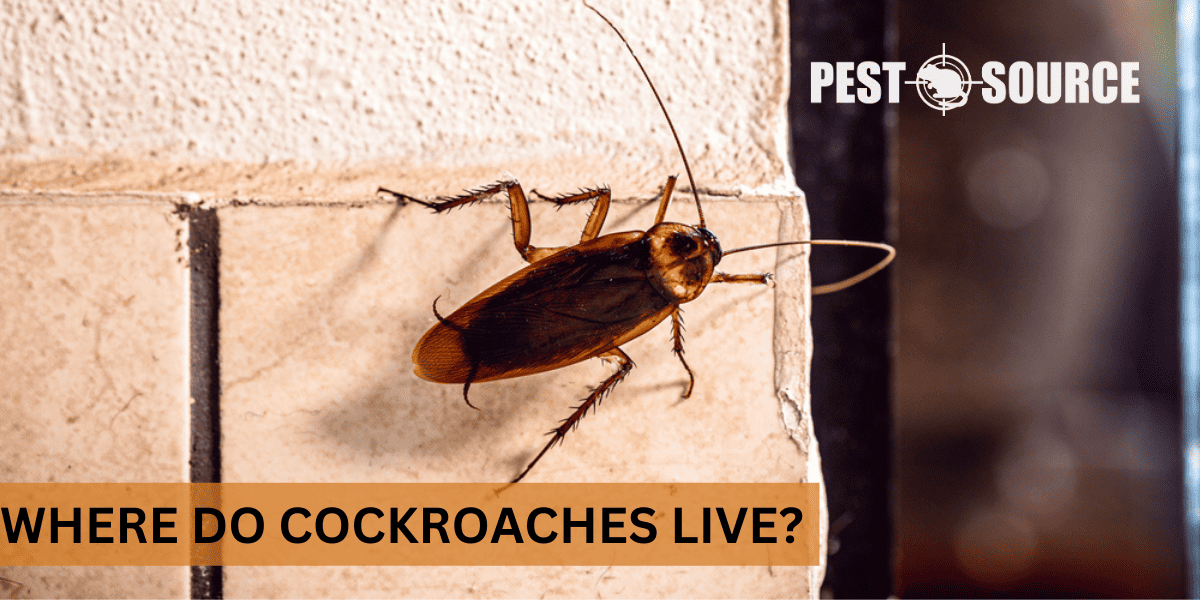Cockroaches prefer dark, moist, and warm environments, often residing in cracks, under sinks, and in wall voids. This article explores their typical habitats within homes and how to target these areas for effective pest control.
POINTS
- Cockroaches prefer warm, moist, and dark areas, such as kitchens and bathrooms indoors, and gardens and under rocks outdoors.
- They are highly adaptable and can be found globally, with over 4,500 species thriving in diverse environments from urban to rural settings.
- Cockroaches pose health risks by spreading bacteria and triggering allergies and asthma, making their control a public health concern.
- They have remarkable survival strategies, including rapid reproduction, dietary flexibility, and the ability to live in extreme conditions.
- Preventing infestations involves maintaining cleanliness, reducing moisture, sealing entry points, and using professional or DIY extermination methods when necessary.
Where Do Cockroaches Live: Habitat, Preferences and Hiding Places
Cockroaches are one of the most adaptable and resilient pests found around the world. Understanding their general habitats and preferences is crucial for effective pest control.
Cockroaches tend to favor environments that provide warmth, moisture, and darkness. Indoors, they’re often found in kitchens and bathrooms because these areas offer an abundance of food, water, and hiding places. Cockroaches hide in cracks and crevices, behind refrigerators, sinks, and stoves, as well as under floor drains and inside of motors and major appliances. These pests can also thrive outdoors in gardens and under rocks, where decaying organic matter provides an ample food source.
Indoor Habitats vs. Outdoor Living Spaces
- Indoor Habitats: Cockroaches inside your home are drawn to:
- Warmth from appliances and central heating
- Moisture from leaking pipes and condensation
- Food remnants and crumbs in kitchens
- Dark and secluded spaces for breeding
- Outdoor Living Spaces: Outside, cockroaches prefer:
- Protected areas under debris, woodpiles, and mulch
- Warm and damp conditions, often found in compost heaps
- Access to food through waste and plant material
The contrast between indoor and outdoor habitats is significant because it highlights the versatility of cockroaches in finding suitable living conditions. Whether it’s the controlled climate of a home or the natural environment, cockroaches are adept at exploiting resources for survival.
Global and Local Habitats: Distribution and Diversity
Cockroaches are not just a local problem; they have a global presence. With over 4,500 species of cockroaches worldwide, these pests have conquered every continent except Antarctica. The diversity among species means they can be found in a range of climates from tropical to temperate regions.
Cockroach Distribution in the U.S.
In the United States, certain species like the German cockroach and the American cockroach are widespread, particularly in urban settings. Rural areas are not exempt, as cockroaches can easily thrive in farm environments where they have access to animal feed and protective cover.
Adaptability Around the World
Cockroaches display remarkable adaptability, which has allowed them to colonize a variety of environmental conditions. For instance, some species are capable of surviving in arid deserts, while others inhabit rainforests. Their ability to eat a wide range of organic materials contributes to their success in diverse habitats.
Cockroaches in Human Habitats: Invasion and Coexistence
Living with cockroaches is an unpleasant thought, yet it is a reality for many. Cockroaches often enter homes through gaps in doors, windows, vents, and plumbing. They can also hitch a ride on bags, boxes, and secondhand appliances. Factors like clutter, food waste, and excess moisture can make a home more inviting to these pests.
Health Implications and Risks
The presence of cockroaches in human habitats is not just a nuisance but also poses health risks. They can spread bacteria and pathogens, exacerbate allergies, and trigger asthma attacks, especially in children. Their droppings, saliva, and shed skin can contaminate food and surfaces, making their control a matter of public health.
Cockroach Survival Strategies and Resilience
Cockroaches are renowned for their survival capabilities. Their adaptability has allowed them to persist through various environmental challenges and changes.
Survival Mechanisms
Cockroaches have developed a range of survival mechanisms that contribute to their resilience:
- Rapid Reproduction: Many species can reproduce quickly, with females capable of producing hundreds of offspring in their lifetime.
- Dietary Flexibility: They can consume almost anything organic, including glue, paper, and even hair.
- Nocturnal Lifestyle: Being active at night helps them avoid predators and human intervention.
- Hardy Physiology: Cockroaches can withstand high levels of radiation and can survive without their head for a week, thanks to their open circulatory system and the ability to breathe through spiracles on their body segments.
Longevity and Extreme Survival
Cockroaches are also known for their longevity and ability to survive extreme conditions. Some species can live for months without food and water, and others can slow down their metabolism to survive when resources are scarce. These traits make them difficult to eradicate once they have established themselves in an environment.
Preventing Infestations: Ensuring Cockroaches Don’t Make Your Home Theirs
Preventing cockroach infestations is key to maintaining a healthy living space. Vigilance and regular maintenance are your best defenses against these persistent pests.
Identifying and Addressing Infestations
Early identification of an infestation is critical:
- Look for Signs: Cockroach droppings, egg cases, and a musty odor are telltale signs of an infestation.
- Regular Inspections: Check hidden areas and potential entry points regularly for signs of cockroaches.
- Immediate Action: At the first sign of an infestation, clean thoroughly and consider contacting a pest control professional.
Making Your Home Less Hospitable
Implement the following practices to deter cockroaches:
- Eliminate Food Sources: Keep food in sealed containers and clean up crumbs and spills immediately.
- Reduce Moisture: Fix leaky faucets and pipes, and use dehumidifiers in damp areas.
- Seal Entry Points: Caulk cracks in walls, floors, and around pipes to prevent cockroach entry.
- Declutter: Reduce clutter to minimize hiding places for cockroaches.
Professional and DIY Solutions
When it comes to exterminating cockroaches, you have a range of options:
- Professional Extermination: For severe infestations, professional pest control services can provide a comprehensive solution.
- DIY Methods: Baits, traps, and insecticides can be effective for smaller infestations. Always follow the manufacturer’s instructions and safety warnings.



